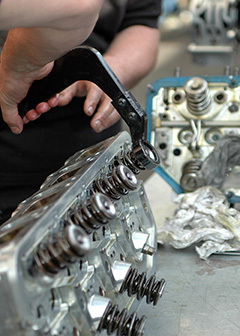Summary

| Quick Facts: Millwrights | |
|---|---|
|
$48,360 per year
$23.25 per hour |
|
| High school diploma or equivalent | |
| None | |
| Long-term on-the-job training | |
| 36,500 | |
| -5% (Decline moderately) | |
| -1,800 | |
What Millwrights Do
Millwrights install, dismantle, repair, reassemble, and move machinery in factories, power plants, and construction sites.
Work Environment
Because millwrights work in production facilities and construction sites, minor injuries such as cuts, bruises, and strains are common. Millwrights are typically employed on a contract basis and may spend only a few days or weeks at a single site. As a result, workers often have variable schedules and may experience downtime between jobs.
How to Become a Millwright
Millwrights typically go through a formal apprenticeship program that lasts about 4 years. Programs are usually a combination of technical instruction and on-the-job training. Others learn their trade through a 2-year associate’s degree program in industrial maintenance.
Pay
The median hourly wage of millwrights was $23.25 in May 2010.
Job Outlook
Employment of millwrights is expected to decline 5 percent from 2010 to 2020. Despite declining employment, job opportunities should be good for those with a broad set of skills in machine maintenance.
Similar Occupations
Compare the job duties, education, job growth, and pay of millwrights with similar occupations.
O*NET
O*NET provides comprehensive information on key characteristics of workers and occupations.
Contacts for More Information
Learn more about millwrights by contacting these additional resources.









